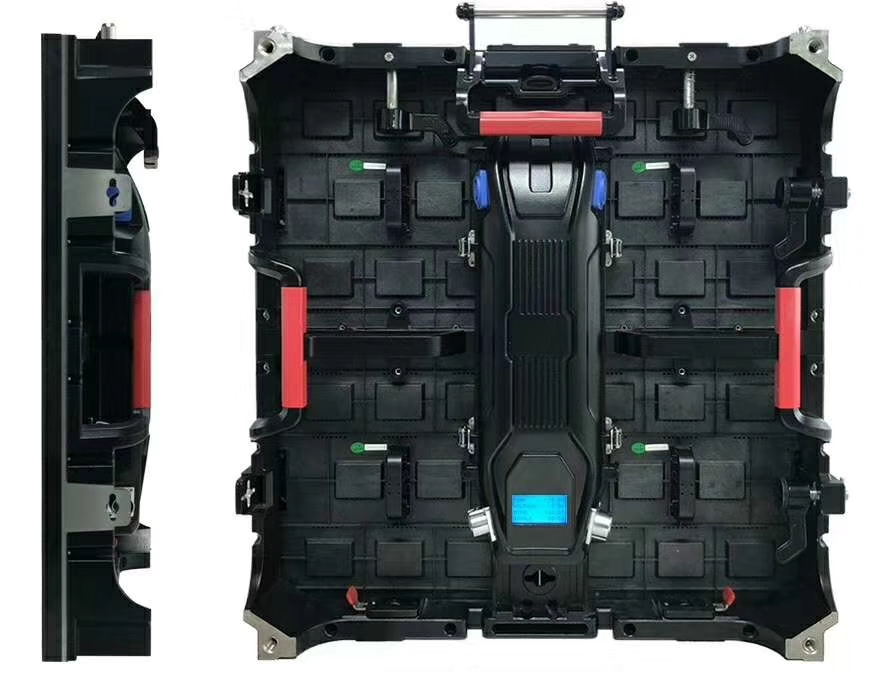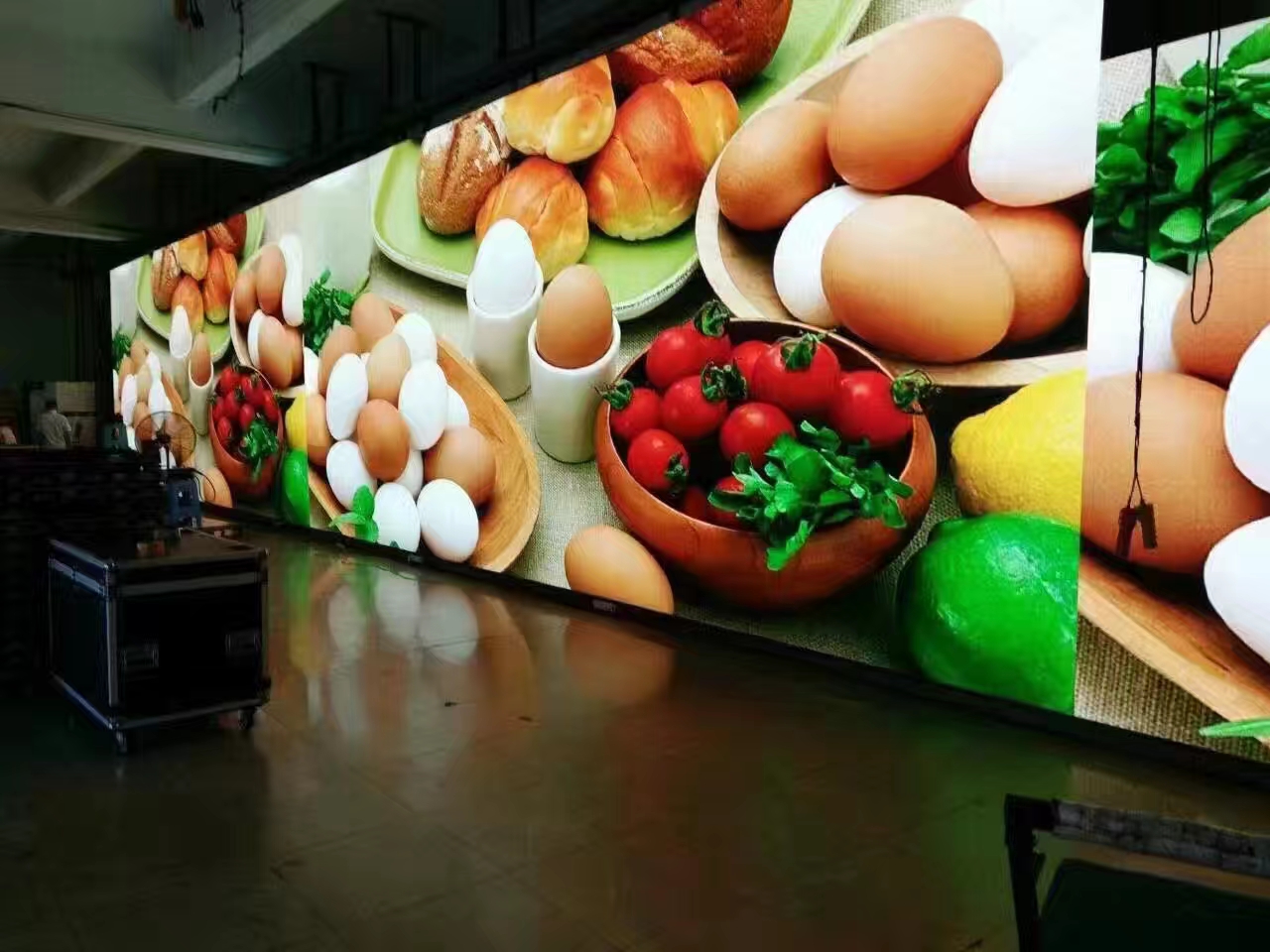Large screen splicing system
At present, the relatively common large-screen splicing system is generally divided into three main types according to the working mode of the display unit, namely, LCD display unit splicing, PDP display unit splicing, and DLP rear projection display unit splicing. The former two belong to the flat panel display unit splicing system, and the latter belong to the projection unit splicing system.
Plasma large screen splicing system
PDP (PlasmaDisplayPanel), which is a plasma display. PDP is a display technology that uses gas discharge and works like a fluorescent lamp. It uses a plasma tube as a light-emitting element. Each plasma tube on the screen corresponds to one pixel. The screen uses glass as a substrate, and the substrates are separated by a certain distance to form a discharge space. The discharge space is filled with a mixed inert gas such as helium or neon as a working medium, and a metal oxide conductive film is coated on the inner surface of the two glass substrates as an excitation electrode. When a voltage is applied to the electrode, a plasma discharge phenomenon occurs in the mixed gas in the discharge space, which is also called a plasma effect. The plasma discharge generates ultraviolet light, and the ultraviolet light excites a fluorescent screen coated with red, green and blue phosphors, and the fluorescent screen emits visible light to reveal an image.
PDP unit splicing has the advantages of bright color, high contrast and high brightness, and it also has its own insurmountable shortcomings. Due to the large amount of electricity and heat generated, plasma can cause serious burns and is not suitable for long-term static display monitoring. And after the PDP unit is used for splicing, the whole machine heats up higher, which makes the device easy to burn. In addition, the current market price of plasma splicing curtain wall is relatively high, generally the price of one square meter is as high as 100,000. Today, low carbon and energy saving have become the mainstream trend. For most ordinary users, plasma splicing is obviously not the best choice.
Despite the many shortcomings, the bright color and high brightness of the plasma make the display effect of the screen have outstanding advantages, which makes plasma splicing become the darling of some exhibition activities. In addition, plasma is also preferred for government agencies that require high picture quality. However, from the overall market share, plasma splicing is at a complete disadvantage, and the development potential of plasma splicing is limited in terms of the development trend of the entire industry. According to some industry insiders, the industry is currently a “chicken rib industry†and will definitely be replaced in the future.
LCD LCD splicing
The so-called LCD liquid crystal large-screen splicing is a splicing screen body that realizes large-screen display effect by splicing control software system by means of splicing of LCD display unit. LCD LCD splicing is currently represented by Samsung's DID in South Korea. Although there are SHARP, LG, NEC and other brands in the splicing market, DID stands out in LCD flat panel splicing technology with its excellent cost performance.
LCD splicing has the advantages of thin thickness, light weight, low energy consumption, long life, no radiation, and its fine picture and high resolution. The excellent performance of various key performance indicators has made it the mainstream of development and the prospect is promising. As a splicing display terminal, although the LCD has the above advantages, as a splicing display unit, its disadvantage is also fatal: that is, its seams are currently large, and the largest among the three spliced ​​display units, so many users have to bear with pain.
DLP splicing system
DLP is an abbreviation for "DigitalLighTIngProgress". It means digital light processing, which means that the technology first digitally processes the image signal and then projects the light. Specifically, DLP projection technology uses digital micromirror wafers (DMDs) as the main key components to implement digital optical processing. The principle is that the light source is homogenized by an integrator, and the color is divided into three colors of R, G, and B through a color ring of color three primary colors (ColorWheel), and then the color is imaged by the lens in the DMD. on. In the method of synchronizing the signal, the digital signal of the digital rotating lens converts the continuous light into a gray scale, and the color is expressed in three colors of R, G, and B, and finally is projected through the lens.
The DLP large-screen splicing system is based on a DLP projector and is equipped with a high-brightness, high-resolution color-realistic video wall composed of an image processor. It can display various computer, network signals and video signals, and the screen can roam freely and open the window. , zoom in and out and overlay. In addition, compared with other splicing technologies, the outstanding advantage of DLP splicing is “zero gapâ€, and the physical gap picture overall display effect is good. Moreover, DLP splicing systems have lower environmental requirements, resulting in lower operating costs.
Rental Screen also known as Mobile Led Display, divided into outdoor mobile screen and indoor mobile screen. Inside and outside rental screen are thin, strong weather resistance die-cast aluminum cabinet, and the use of the latest anti-collision disc technology, enhance the transport and installation of the anti-collision strength of the screen, extend the service life. The protection level of outdoor rental screen is higher than that of indoor rental screen, and the IP level is higher than IP65.

The screen adopts seamless assembly technology, screw, magnetic absorption coexistence, simple installation and maintenance, to ensure the flatness of the screen body. Hoisting, landing, wall hanging, lying flat (floor tile), straight spell, arc spell and other installation methods, to meet the needs of customers on different site locations.
Mobile screen PH2.97/PH3.91/PH4.81 as a mobile rental use, very popular with customers. MobileLED Display is widely used in Mobile Performance.Equipment Leasing.Information Release.Event.Choreography etc.

LED Wall Rental Screen,Mobile Video LED Display,Advertising Screen
Shenzhen Vision Display Technology Co,.LTD , https://www.ledvdi.com